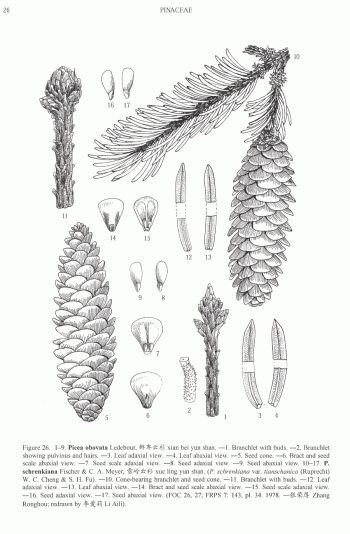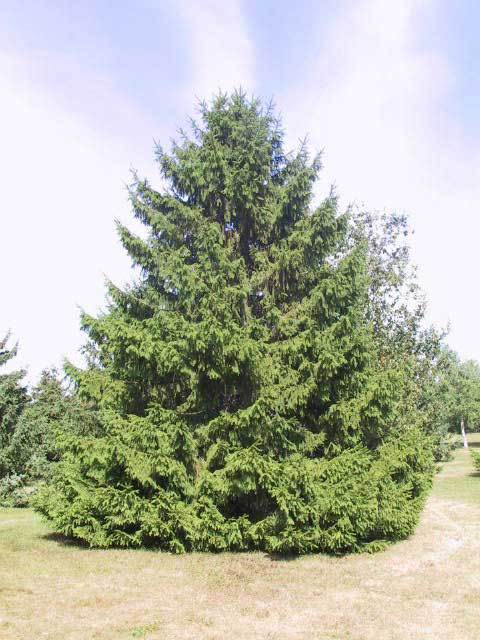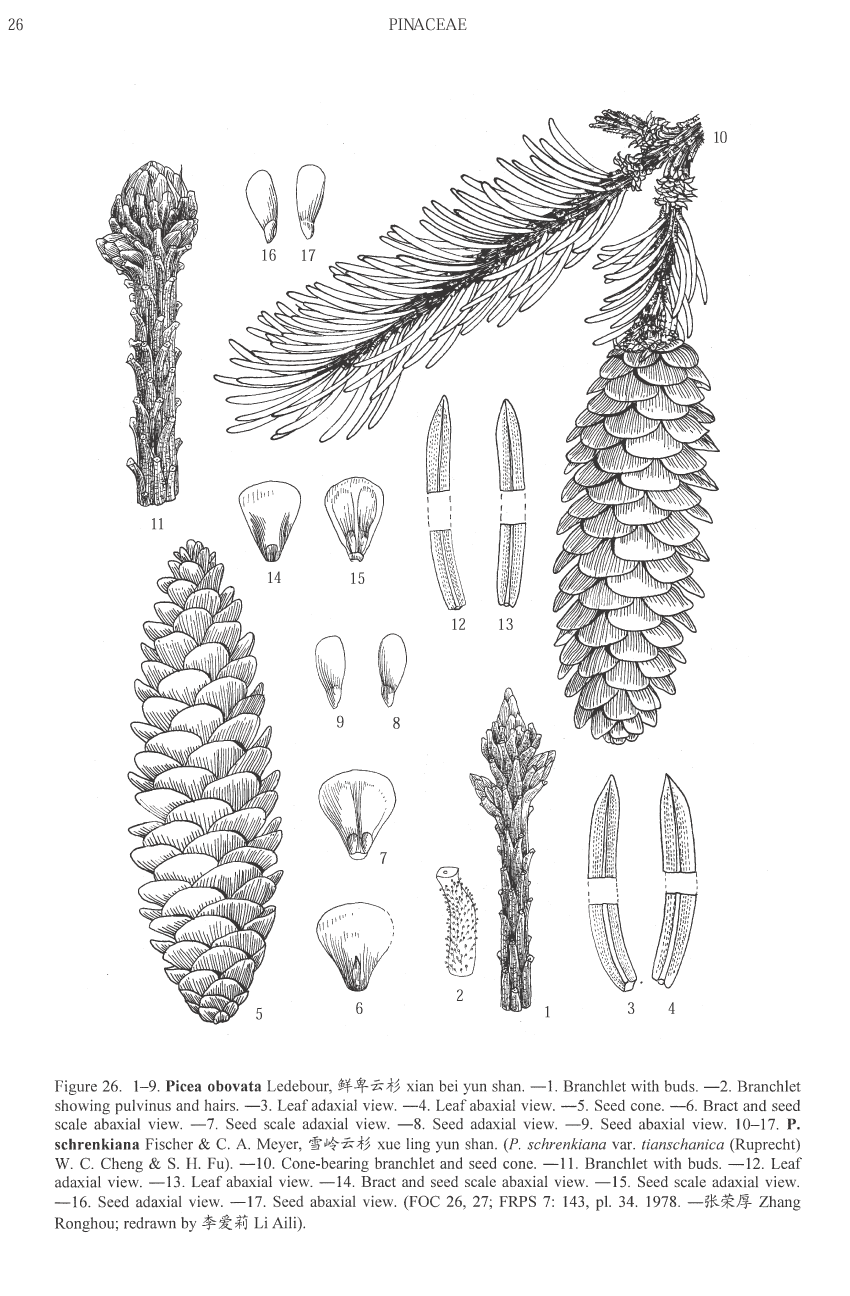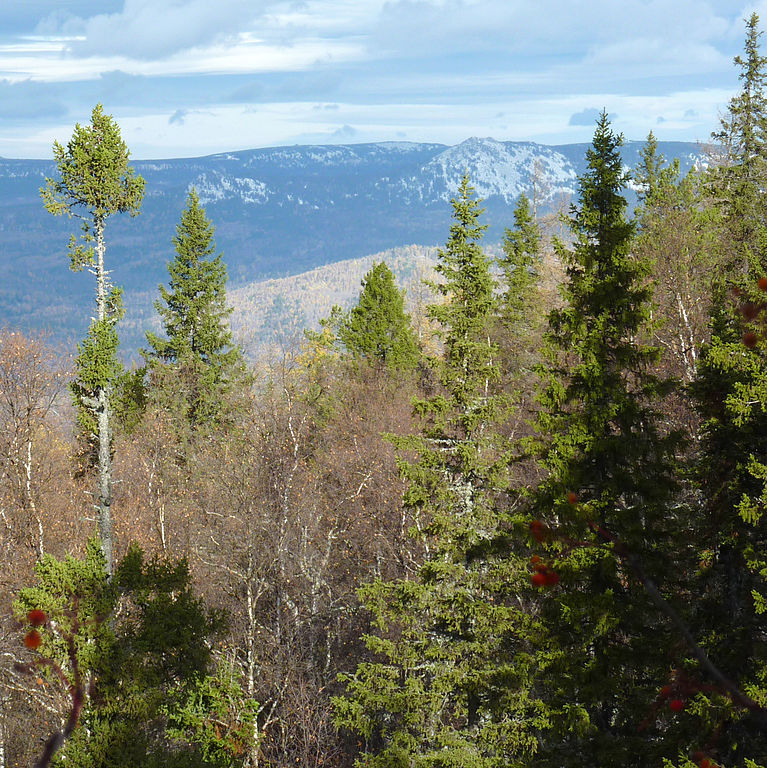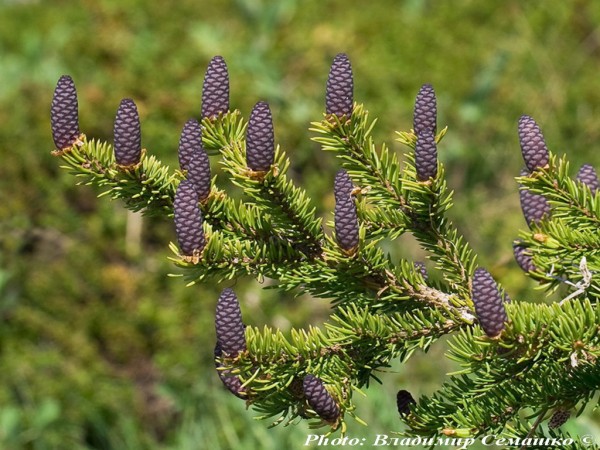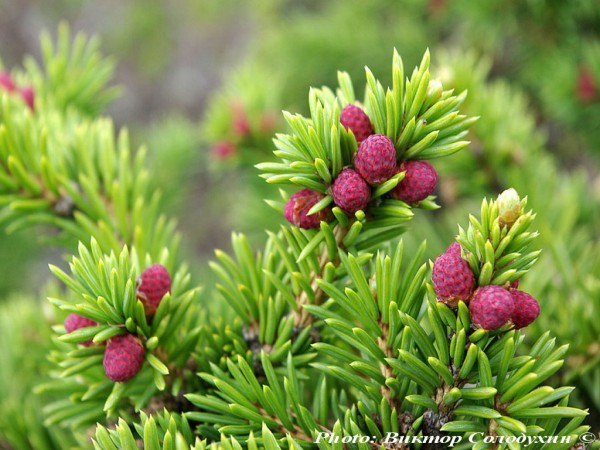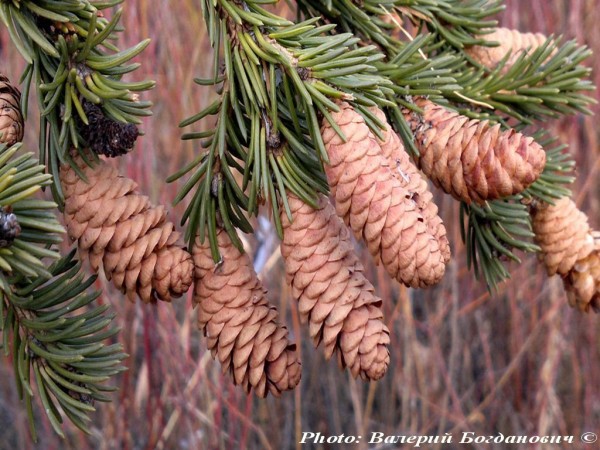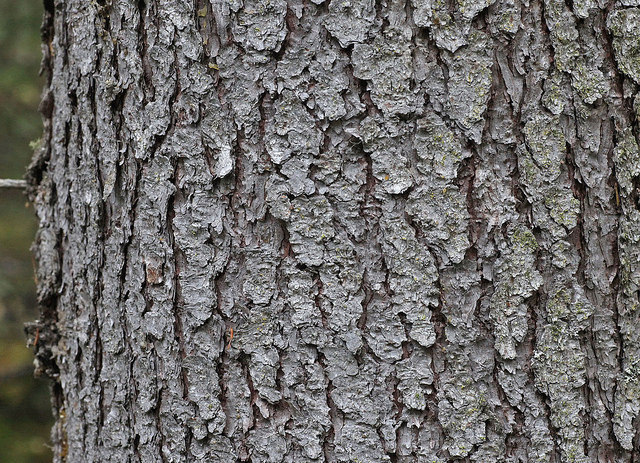Picea obovata, as described in 1833 by Carl Friedrich von Ledebour (1785-1851), in Flora Altaica, 4th edition, is commonly known as Siberian spruce as well as Ель ÑибиÑ'ÑÐºÐ°Ñ (Yel' sibirskaya) in the Russian language, 西伯Šˆ©äºšäº‘æ‰ (xian bei yun shan) in Chinese, and Sibirgran in Norwegian. The species name is from the Latin term for "obovate," referring to the shape of the cone scales.
Some authors describe this species as very similar to Norway spruce (P. abies), arguably synonymous or perhaps better described as a variety, Picea abies var. obovata. Aljos Farjon (1990) described an intermediate form in northeastern Russia, Finnish spruce (P. × fennica E. Regel), witch represents an introgressive hybrid between the two species. This introgression is detailed by Krutovskii and Bergmann (1995), who analyzed isozyme loci for populations sampled from across the range of the two species. They found so little variation between the two taxa, and such a large zone of introgressive hybridization (covering both sides of the Ural Mountains) as to warrant describing them as "two geographical races of one spruce species."
Description. Siberian spruce is an evergreen coniferous species of tree that grows to mature heights of 125 feet (40 m) tall; with a trunk up to 40 inches (1 m) in diameter, measured at breast height; and a broadly pyramidal crown.
- Bark is dark gray in color and irregularly flaking.
- Branchlets are initially yellow or pale brown-yellow with dense glandular hairs; with age, turning gray or dull gray and puberulent.
- Foliar buds in winter are pale brown-yellow in color, with a conical shape. They are resinous, with scales slightly recurved at the base of the branchlets.
- Leaves are directed forward on upper side of branchlets, spreading on lower side, with a quadrangular-linear outline. Individual needles are more-or-less curved, quadrangular or broadly rhombic in cross section, measuring 0.52 to 0.92 inch (1.3 - 2.3 cm) long and circa 0.08 inch (2 mm) wide. Stomatal lines number 5 to 7 along each adaxial surface and 4 or 5 along each abaxial surface. Apices are acute.
- Pollen cones measure 0.48 to 1 inch (12 - 25 mm) long, and are purplish red in color.
- Seed cones are purple or dark purple, rarely green when young, maturing brown, with an ovoid-cylindric or cylindric shape. Individual cones measure 2 to 4.4 inches (5 - 11 cm) long and 0.8 to 1.2 inches (2 - 3 cm) broad. Seed scales at middle of cones cuneate-obovate shaped and convex, measuring 0.72 to 0.84 inch (1.8 - 2.1) long and 0.6 to 0.72 inch (1.5 - 1.8 cm) wide. Exposed parts are nearly smooth, sometimes slightly striated, distal margins are entire, rounded, or truncate-rounded.
- Seeds dark brown in color, with a triangular-obovoid shape, each measuring circa 0.2 inch (5 mm) long with an obovate-oblong wing, 0.36 to 0.44 inch (9 - 11 mm) long.
Distribution. This species is native to China's Xinjiang province; as well as Kazakhstan, Mongolia, and Russia, where it grows in mountains, slopes, river basins, and valleys at elevations of 4,000 to 6,000 feet (1,200 - 1,800 m) above sea level.
Hardy to USDA Zone 2 - cold hardiness limit between -50° and -40°F (-45.6° and -40.0°C). It is one of Earth's most-hardy conifers.
